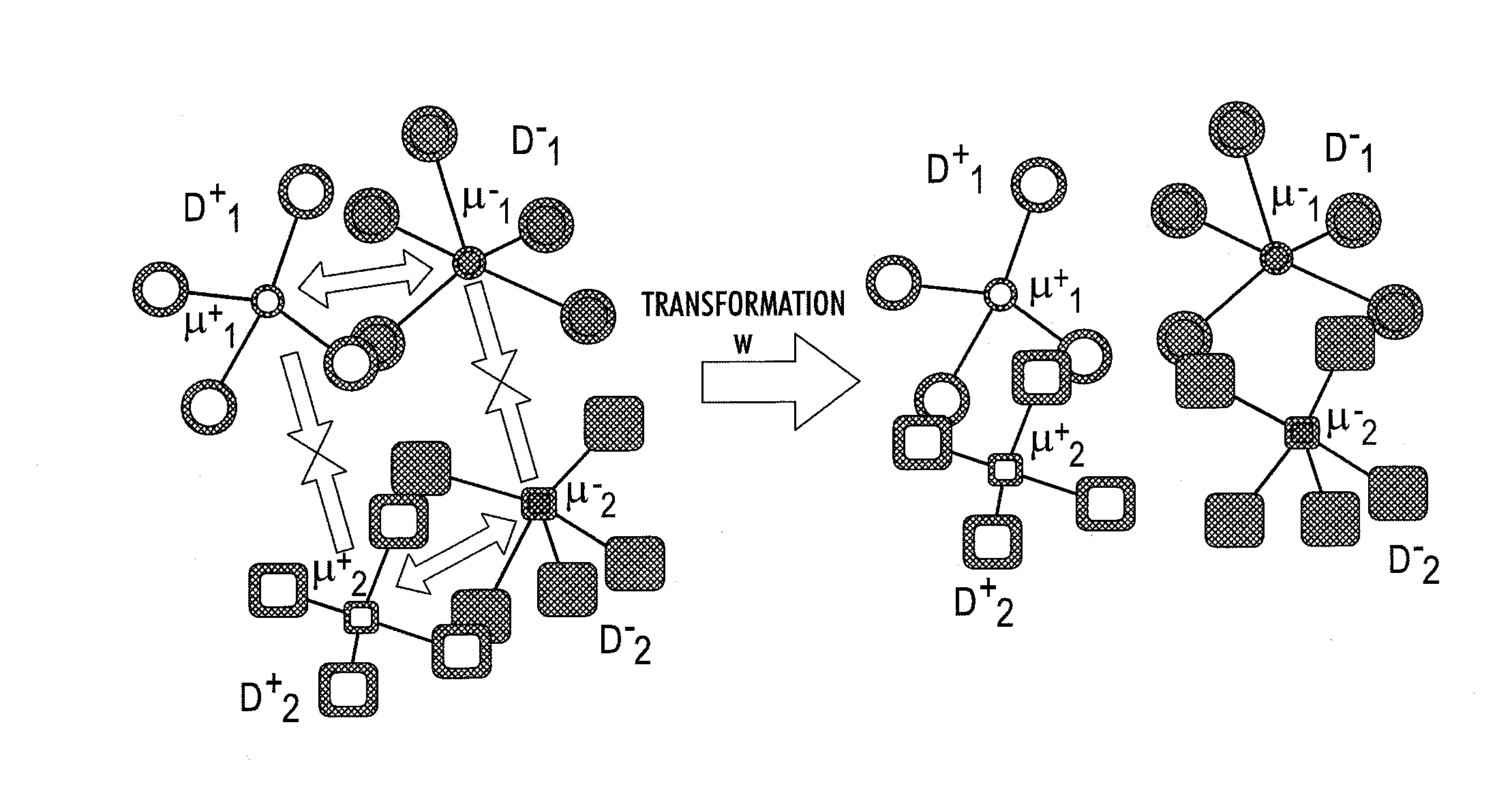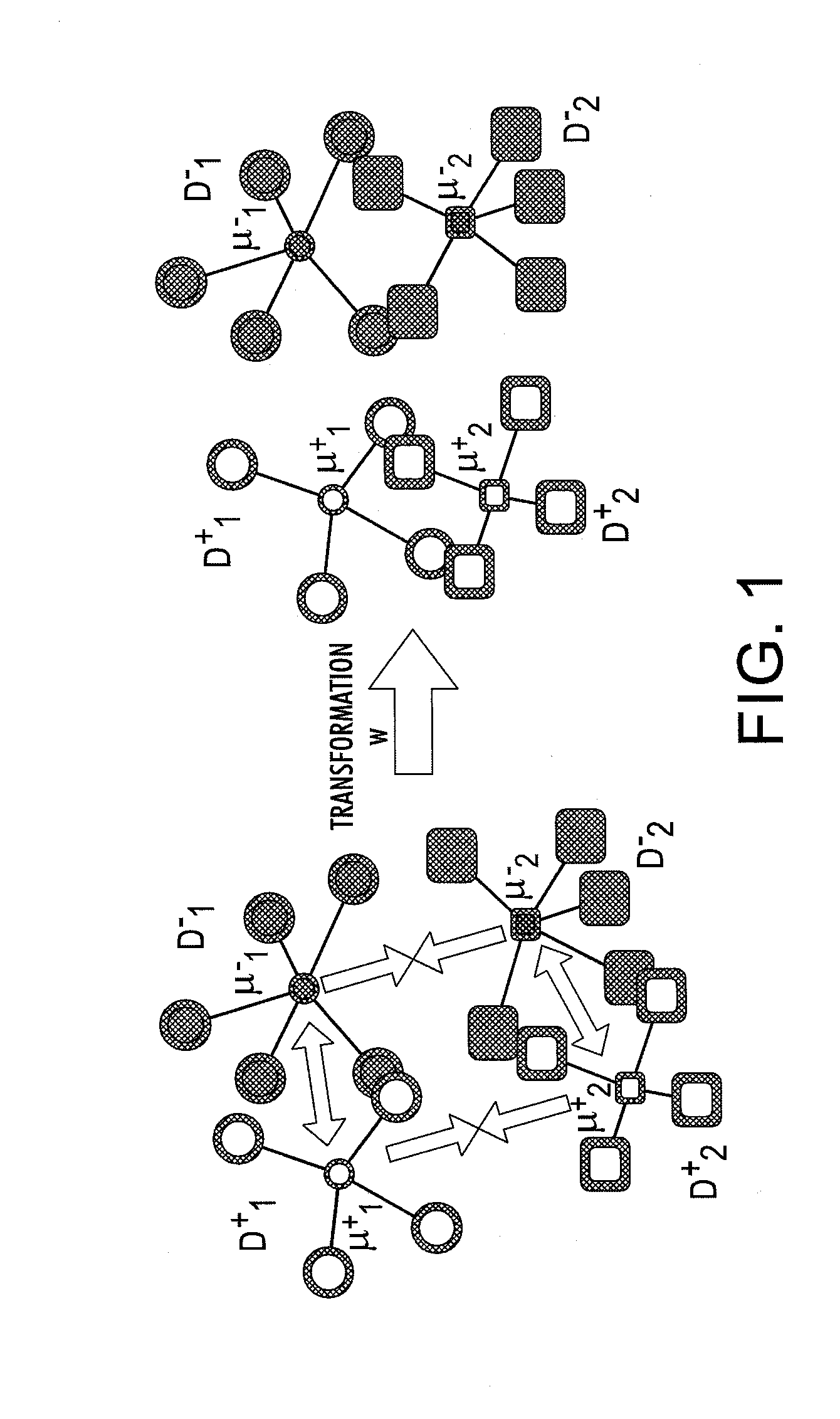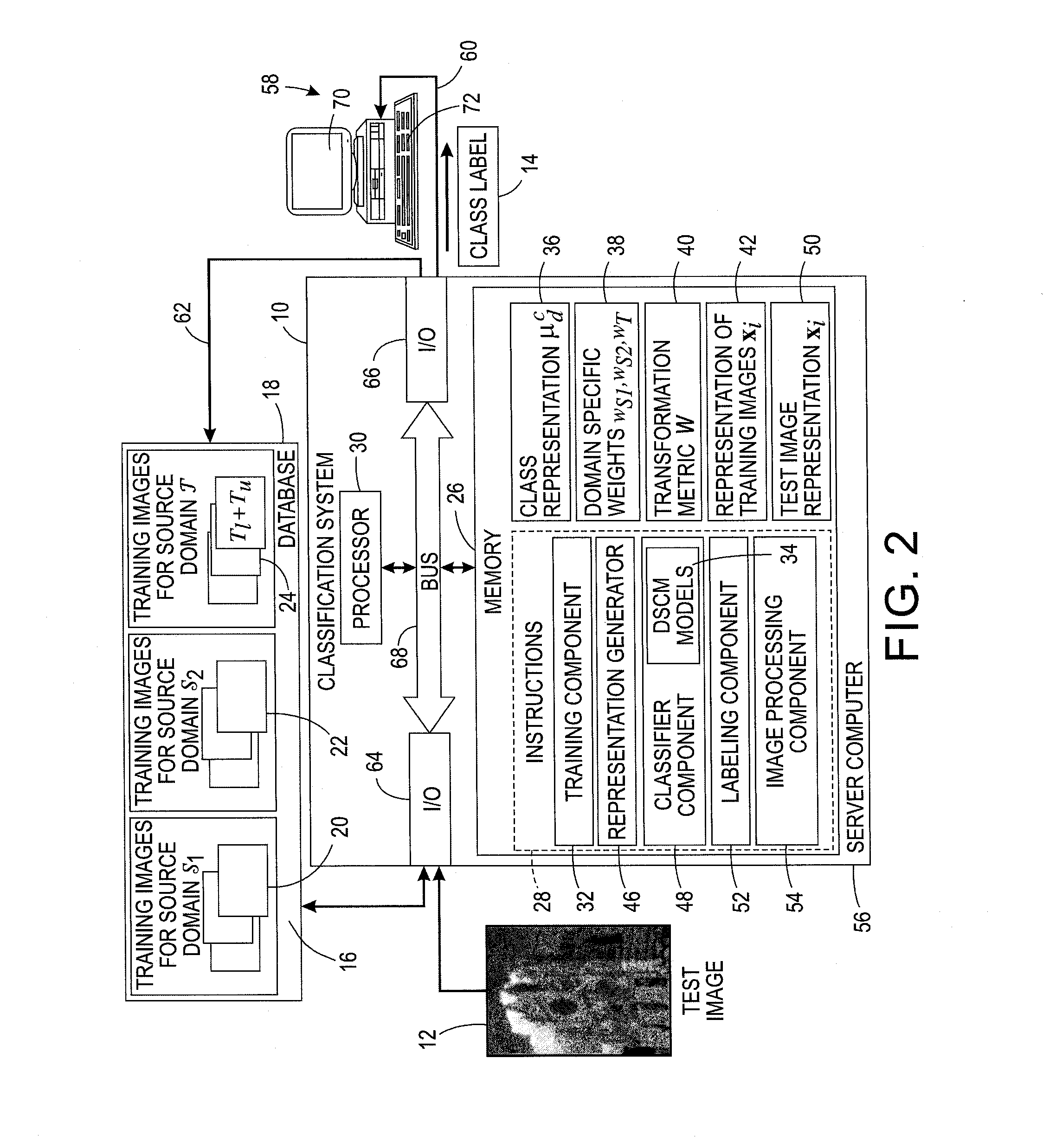System for domain adaptation with a domain-specific class means classifier
a domain-specific class and domain-specific technology, applied in the field of machine learning, can solve the problems of poor performance in the target domain, high cost of acquiring data labels, and shortage of labeled data for training classifiers in specific domains
- Summary
- Abstract
- Description
- Claims
- Application Information
AI Technical Summary
Benefits of technology
Problems solved by technology
Method used
Image
Examples
examples
Datasets
[0134]The following datasets were used to test the method, ICDA1 and ICDA2 from the ImageClef Domain Adaptation Challenge (http: / / www.imageclef.org / 2014 / adaptation). ICDA2 denotes the dataset that was used in the challenge to submit the results and ICDA1 the set of image representations provided in the first phase of the challenge. (The ImageClef Domain Adaptation Challenge had two phases where in the first phase the participants were provided with a similar configuration as in the submission phase, but with different image representations). The datasets consist of a set of image representations extracted by the organizers on randomly selected images from five different image collections. The image representations are a concatenation of four bag-of-visual word (BOV) representations (using the method of Csurka, G., et al., “Visual categorization with bags of keypoints,” ECCV Workshop on Statistical Learning in Computer Vision (2004)) built on a 2×2 split of the image, where t...
PUM
 Login to View More
Login to View More Abstract
Description
Claims
Application Information
 Login to View More
Login to View More - R&D
- Intellectual Property
- Life Sciences
- Materials
- Tech Scout
- Unparalleled Data Quality
- Higher Quality Content
- 60% Fewer Hallucinations
Browse by: Latest US Patents, China's latest patents, Technical Efficacy Thesaurus, Application Domain, Technology Topic, Popular Technical Reports.
© 2025 PatSnap. All rights reserved.Legal|Privacy policy|Modern Slavery Act Transparency Statement|Sitemap|About US| Contact US: help@patsnap.com



